The Mediterranean diet is well-regarded for its health benefits, which are heavily rooted in plant-based foods and healthy fats. When adapting the Mediterranean diet to be gluten-free, an area of particular interest is the role of legumes. Legumes, which are a cornerstone of the Mediterranean diet, offer a rich source of protein, fiber, and various nutrients without containing gluten. This makes them an excellent food choice for those looking to combine the gluten-free and Mediterranean eating patterns.
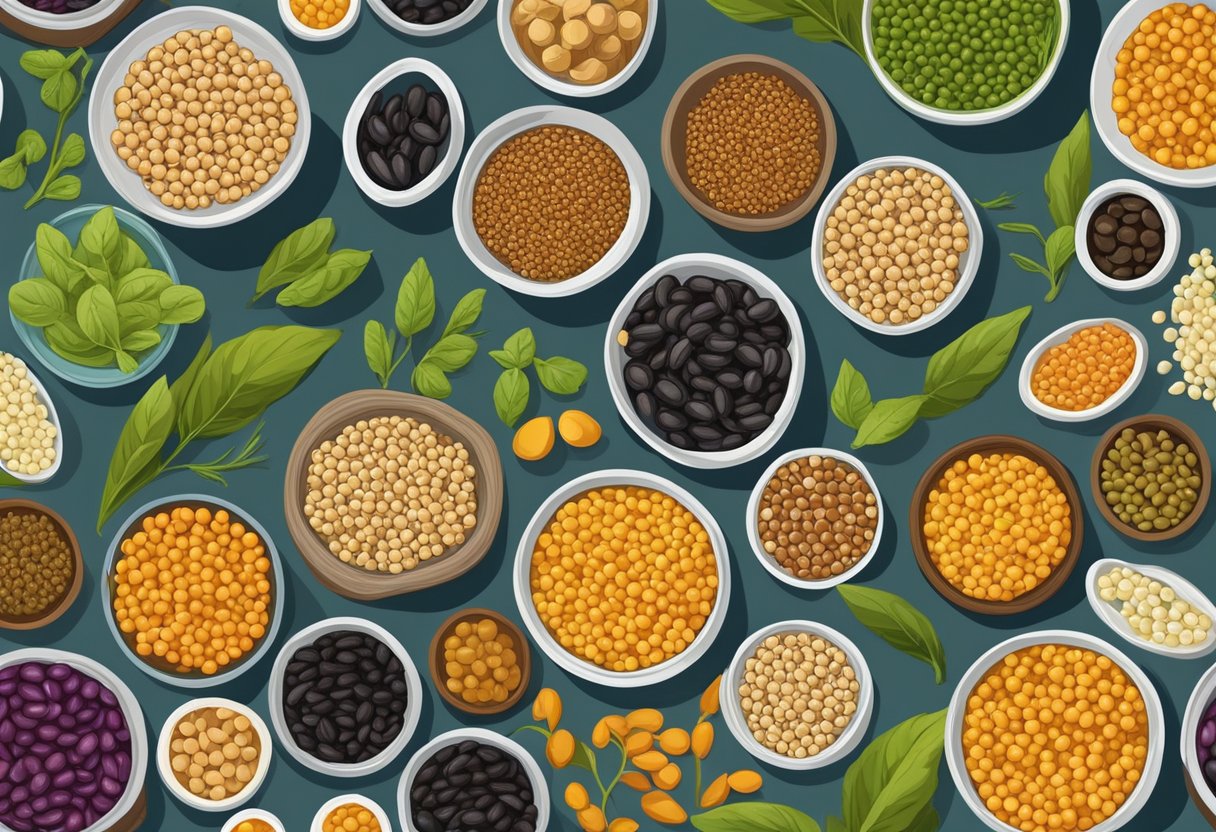
Incorporating legumes into a gluten-free Mediterranean diet requires an understanding of both the nutritional benefits they provide and the ways they can be used to maintain dietary variety and satisfaction. They serve not only as a substitute for gluten-containing grains but also as a versatile ingredient in a wide array of dishes. With proper guidance from health professionals and attention to dietary needs, individuals can enjoy the full flavors and health advantages of a gluten-free Mediterranean meal plan that includes a variety of legumes.
Key Takeaways
- Legumes are a gluten-free source of protein and fiber, essential in the Mediterranean diet.
- They enhance the gluten-free Mediterranean diet with nutritional value and culinary diversity.
- Consulting health professionals helps tailor the diet to individual needs, ensuring nutritional adequacy.
Table of Contents
Fundamentals of the Mediterranean Diet
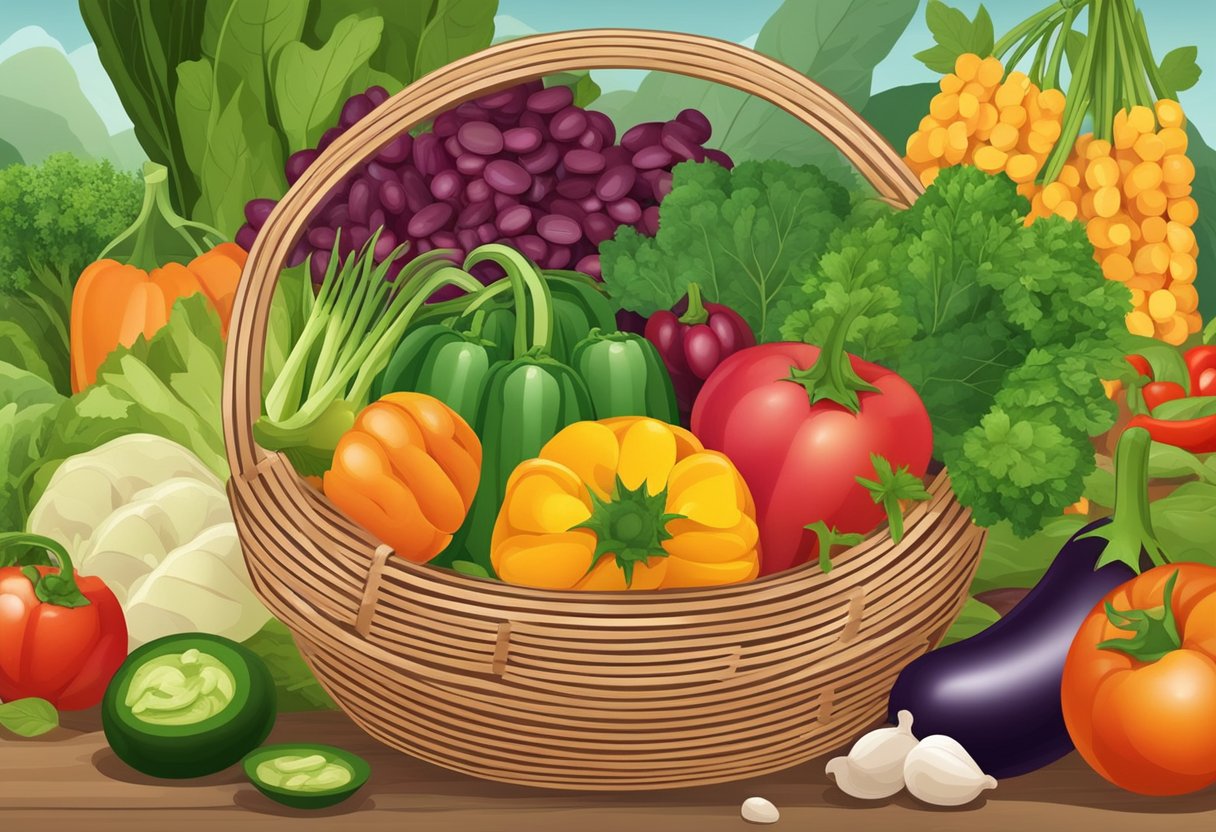
The Mediterranean Diet emphasizes a diverse intake of nutritious foods, which contribute to numerous health benefits. It stands out for its rich variety of plant-based ingredients and heart-healthy fats, which play a crucial role in preventing chronic illnesses.
Key Components and Food Groups
- Vegetables: A cornerstone of the diet, including leafy greens, root vegetables, and cruciferous varieties.
- Fruits: Seasonal and fresh fruits, such as berries, citrus, and stone fruits, are common.
- Whole Grains: Gluten-free variants such as quinoa and brown rice substitute traditional cereals.
- Nuts: Almonds, walnuts, and pistachios are eaten regularly, in moderation.
- Healthy Fats: Extra virgin olive oil is the primary source of fat, used liberally.
- Protein: Fish and seafood feature prominently; poultry is consumed in moderation while red meats are limited.
Health Benefits of the Mediterranean Diet
- Heart Disease: Regular consumption of olive oil and nuts, associated with reduced heart disease risk.
- Cancer: The high fiber from vegetables and fruits is linked with a lower risk of certain cancers.
- Diabetes: The diet’s low glycemic load helps in managing blood sugar levels.
- Blood Pressure: Potassium-rich foods help in maintaining healthy blood pressure.
- Cardiovascular Disease: The overall dietary pattern supports cardiovascular health.
- Aging: Antioxidant-rich ingredients may contribute to healthier aging.
Understanding Gluten and Its Dietary Restrictions
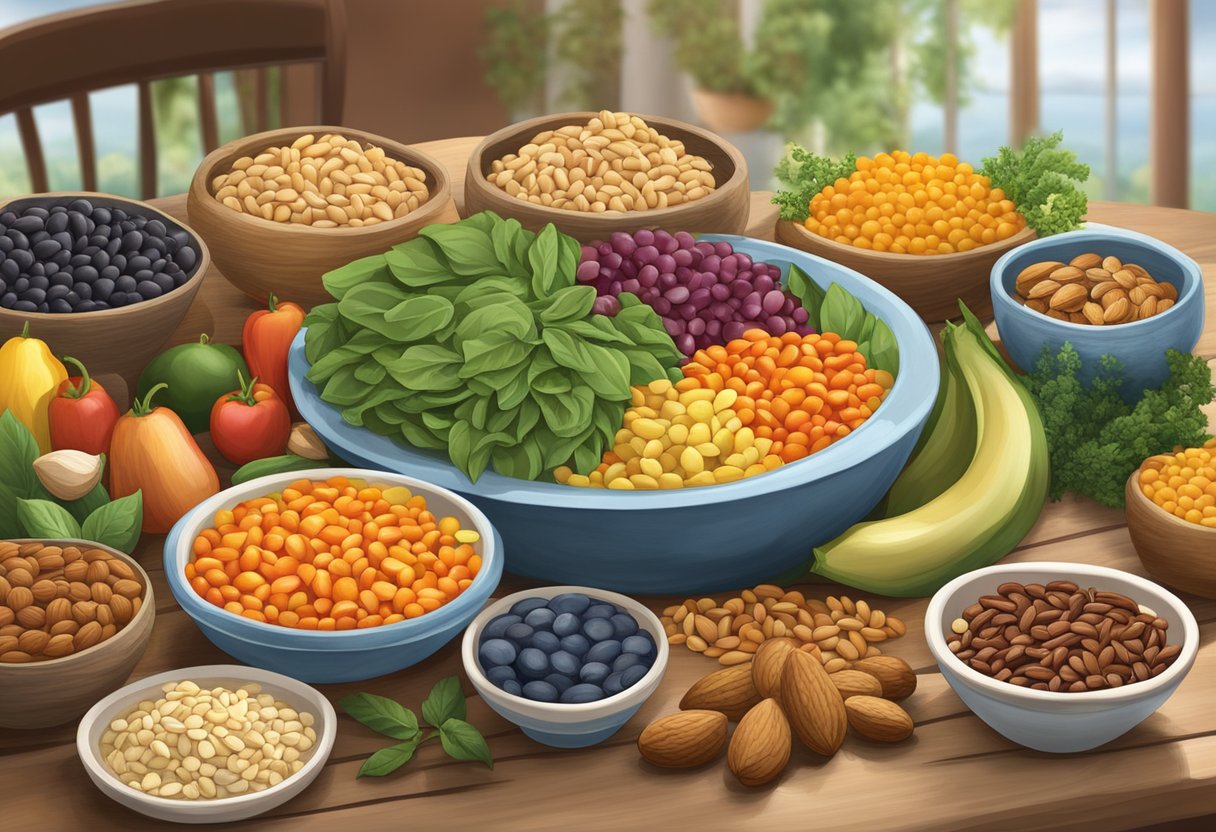
The focal point of this section is to shed light on what gluten is, its link to celiac disease, and the grains that should be avoided in a gluten-free diet.
What Is Gluten and Celiac Disease
Gluten is a family of proteins found primarily in wheat, barley, and rye. It acts as a binding agent, giving bread its chewy texture. Celiac disease is an autoimmune disorder where the ingestion of gluten leads to damage in the small intestine. When individuals with celiac disease consume gluten, their immune system mounts an attack on the intestine, leading to various health issues.
Gluten Containing Grains to Avoid
Individuals on a gluten-free diet should strictly avoid the following grains:
- Wheat (including varieties like spelt, kamut, farro, and durum, as well as products such as bulgur and semolina)
- Barley (often found in malt, malt vinegar, and beer)
- Rye (commonly used in rye bread, rye beer, and some cereals)
It is also important to exercise caution with oats, as they are often cross-contaminated with gluten-containing grains during processing. While oats are inherently gluten-free, they must be certified gluten-free to ensure they have not been contaminated.
Incorporating Legumes into a Gluten-Free Mediterranean Diet
Legumes are a standout in the Gluten-Free Mediterranean Diet, offering a valuable source of protein, fiber, and nutrients without the gluten found in many grains.
Nutritional Benefits of Legumes
Legumes, which encompass beans, lentils, and chickpeas, are integral to the Mediterranean diet’s plant-based profile. These little powerhouses are not only naturally gluten-free but also high in protein and fiber. They contribute to a feeling of fullness, help with digestion, and can manage blood sugar levels. Not to be overlooked are their healthy fats, essential for heart health and overall well-being.
Selecting Gluten-Free Legumes
When selecting legumes for a gluten-free Mediterranean diet, it is crucial to opt for pure, uncontaminated varieties. This means choosing whole, unprocessed beans, lentils, and chickpeas without additives or fillers that could contain gluten. Legumes sold in their natural form, like dried or fresh, are safe, while it’s imperative to check the labels on canned or prepared legume products to ensure they meet gluten-free standards.
Designing a Gluten-Free Mediterranean Meal Plan
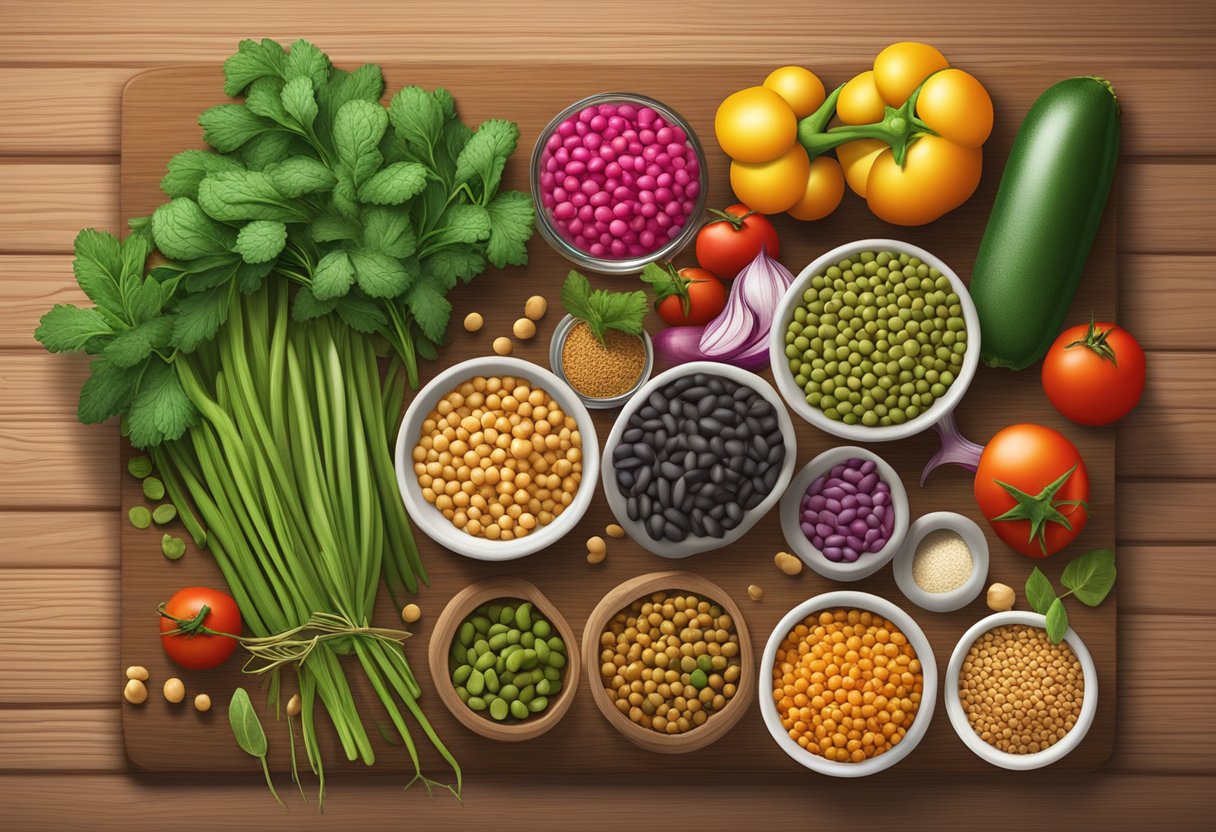
When creating a gluten-free Mediterranean meal plan, one should focus on incorporating a variety of nutrient-dense foods. This includes legumes, whole grains, fruits, and lean proteins that adhere to both Mediterranean and gluten-free dietary guidelines.
Sample Breakfast Options
For those beginning their day on a gluten-free Mediterranean diet, breakfasts can be both satisfying and nutritious. One might opt for Greek yogurt mixed with fruits such as berries or slices of apple. Incorporating a handful of almonds adds crunch and additional protein. Another option includes scrambled eggs with spinach, tomatoes, and peppers served with gluten-free toast.
Yogurt Bowl
- Greek yogurt
- Mixed berries or apple slices
- A sprinkle of almonds
Veggie Scramble
- Scrambled eggs
- Spinach, tomatoes, peppers
- Gluten-free toast
Lunch Ideas Featuring Legumes
Lunches in this meal plan should emphasize the nutritional benefits of legumes, which are a staple in the Mediterranean diet. A vibrant salad made with lentils, chopped vegetables, and a splash of olive oil makes for a filling meal. Chickpea salads combined with a variety of vibrant vegetables like spinach, tomatoes, and peppers contribute to the intake of fiber and plant-based protein.
Lentil Salad
- Cooked lentils
- Chopped vegetables (tomatoes, cucumbers, peppers)
- Olive oil and vinegar dressing
Chickpea Salad
- Chickpeas
- Spinach, tomatoes, and roasted peppers
- Lemon juice dressing
Dinner with Diverse Protein Sources
Dinners on the gluten-free Mediterranean diet are centered around diverse protein sources, paired with salads or roasted vegetables. Grilled fish or salmon provides healthy omega-3 fatty acids, while roasted or grilled poultry offers lean protein. If the individual enjoys meat, they should choose lean cuts and consume it sparingly, consistent with the diet’s guidelines to eat red meat less frequently.
Grilled Salmon
- Salmon fillet
- Side of mixed greens
- Quinoa or brown rice
Roasted Chicken
- Herb-roasted chicken breast
- Roasted Mediterranean vegetables
- Gluten-free grain of choice
Fats and Oils in a Gluten-Free Mediterranean Diet
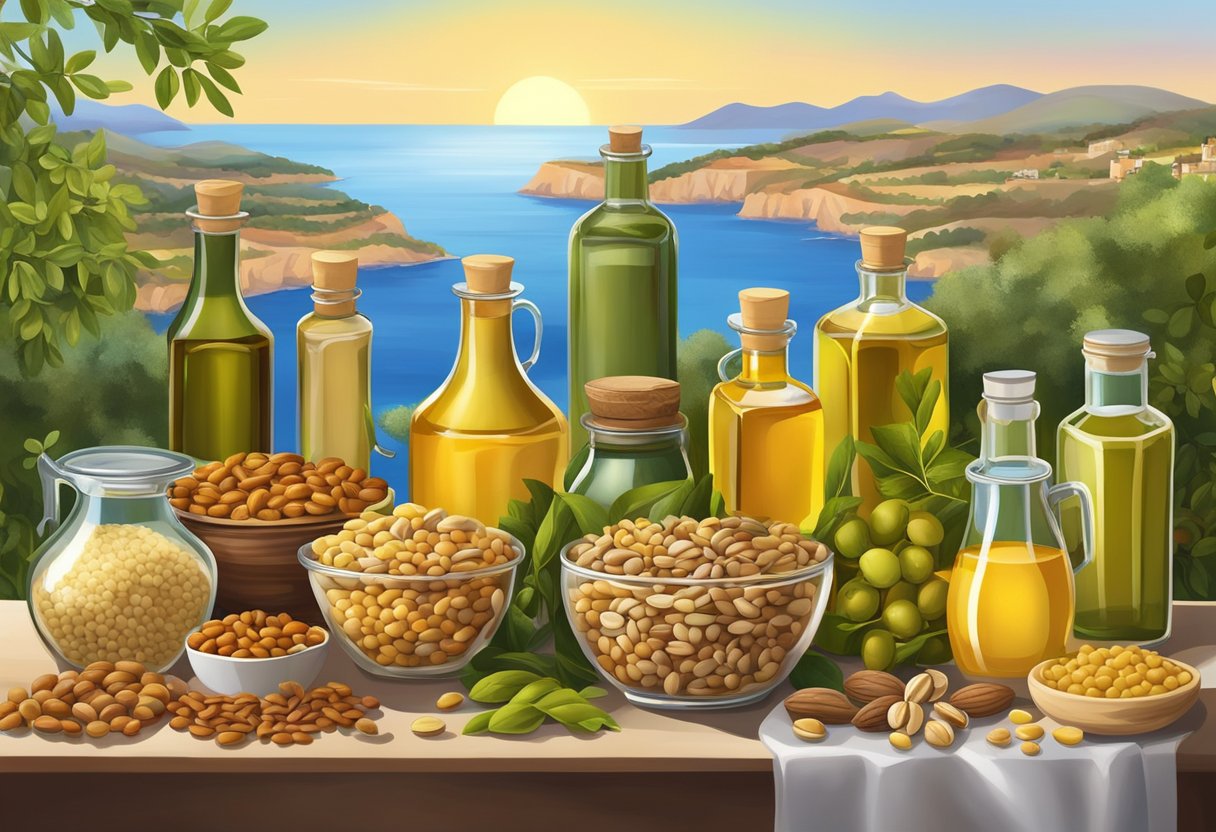
In a gluten-free Mediterranean diet, healthy fats and oils play an essential role. One should prioritize monounsaturated fats such as olive oil and include a variety of seeds and nuts.
Healthy Fats and Their Sources
Olive oil stands at the heart of the Mediterranean diet, renowned for its monounsaturated fats, which can help reduce the risk of heart disease. In a gluten-free Mediterranean diet, extra virgin olive oil is preferred for its purity and high antioxidant content.
- Nuts like almonds and walnuts are staples, offering a good source of protein and fiber.
- Seeds, such as flax and chia, contribute essential fatty acids and can enhance gluten-free dishes both in nutrition and texture.
Incorporating Mediterranean Diet-Oriented Oils
Incorporating these oils into the diet is straightforward:
- Olive oil can be used as a dressing for salads or a base for cooking.
- The diverse range of nuts serves as a nutrient-rich snack or as toppings for salads and gluten-free cereals.
- Seeds can be sprinkled over dishes, baked into gluten-free bread, or blended into smoothies to add a nutritional boost.
By including a variety of healthy fats from oils, nuts, and seeds, individuals can enjoy the full flavors and health benefits of a gluten-free Mediterranean diet.
Adapting Dishes and Recipes for Gluten Sensitivities
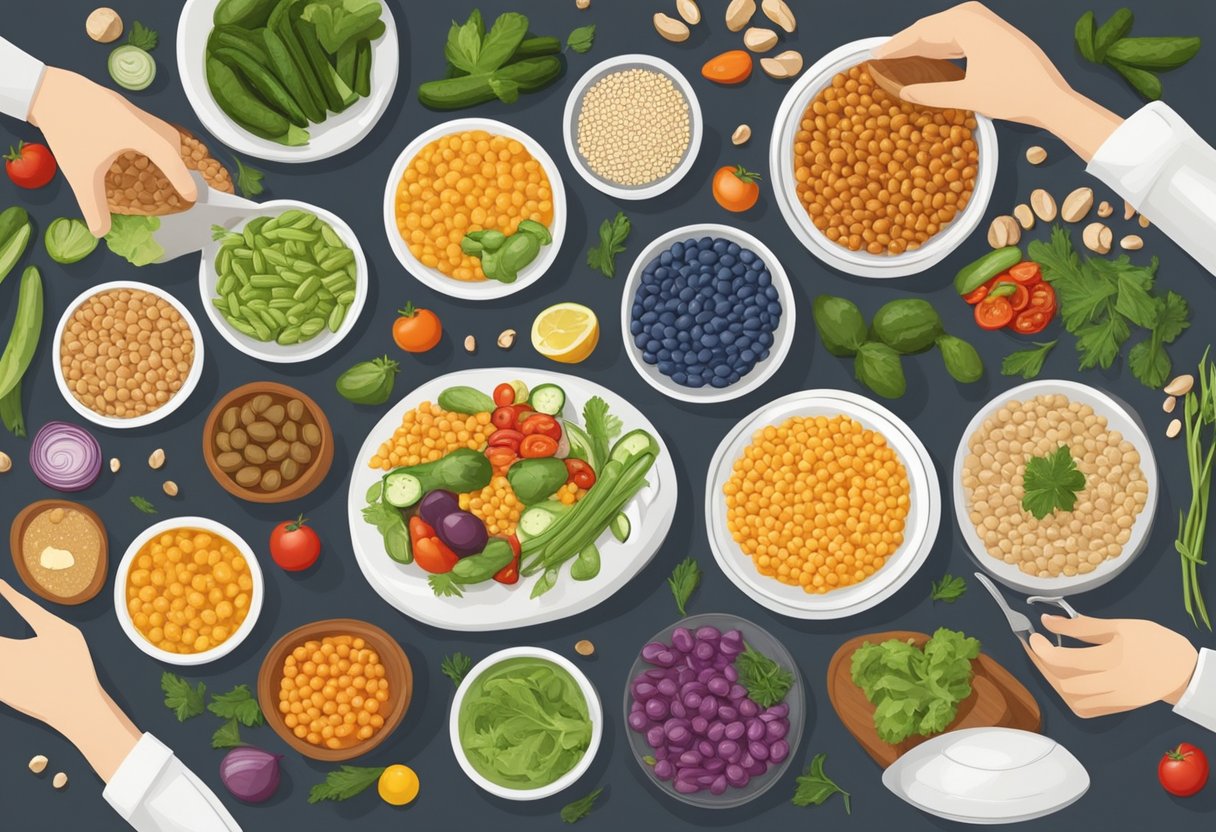
When transitioning to a gluten-free Mediterranean diet, it’s essential to recognize suitable substitutes for gluten-containing staples and adjust cooking and baking techniques to accommodate these changes.
Gluten-Free Replacements for Staples
Finding safe and nourishing alternatives is crucial for dishes traditionally reliant on gluten-containing grains. Rice and quinoa are excellent options for gluten-free whole grains that can replace wheat in many recipes. Corn, a versatile ingredient in forms like tortillas and polenta, can impart a unique flavor and texture to Mediterranean dishes. For those enjoying the nutty taste of grains in their salads or bowls, buckwheat—despite its name—is an entirely gluten-free option that pairs well with roasted vegetables and herby dressings.
- Rice: A staple in risottos and pilafs.
- Quinoa: Ideal for salads and as a side dish.
- Corn: Can be used in tortillas, chips, and polenta.
- Buckwheat: Suitable for pancakes, porridge, and as a wheat substitute in salads.
Cooking and Baking without Gluten
Cooking and baking while adhering to gluten-free constraints requires some adjustments to traditional methods. In baking, one must combine various gluten-free flours to achieve the right consistency. For example, a blend of rice flour and cornstarch can create a light and airy texture in cakes, while buckwheat flour works well in bread and dough recipes. It’s important to carefully measure these substitutes, as their absorption and binding qualities differ from that of wheat-based flours. Cooking methods largely remain the same, but one should ensure all additional ingredients, such as broth or condiments, are certified gluten-free to avoid cross-contamination.
- Baking Mixes: Combine flours like rice and cornstarch for desired textures.
- Binding Agents: Utilize xanthan gum or psyllium husk to replace gluten’s binding property.
- Broths and Condiments: Verify that these are gluten-free to prevent cross-contamination.
Lifestyle and Dietary Guidance from Health Professionals
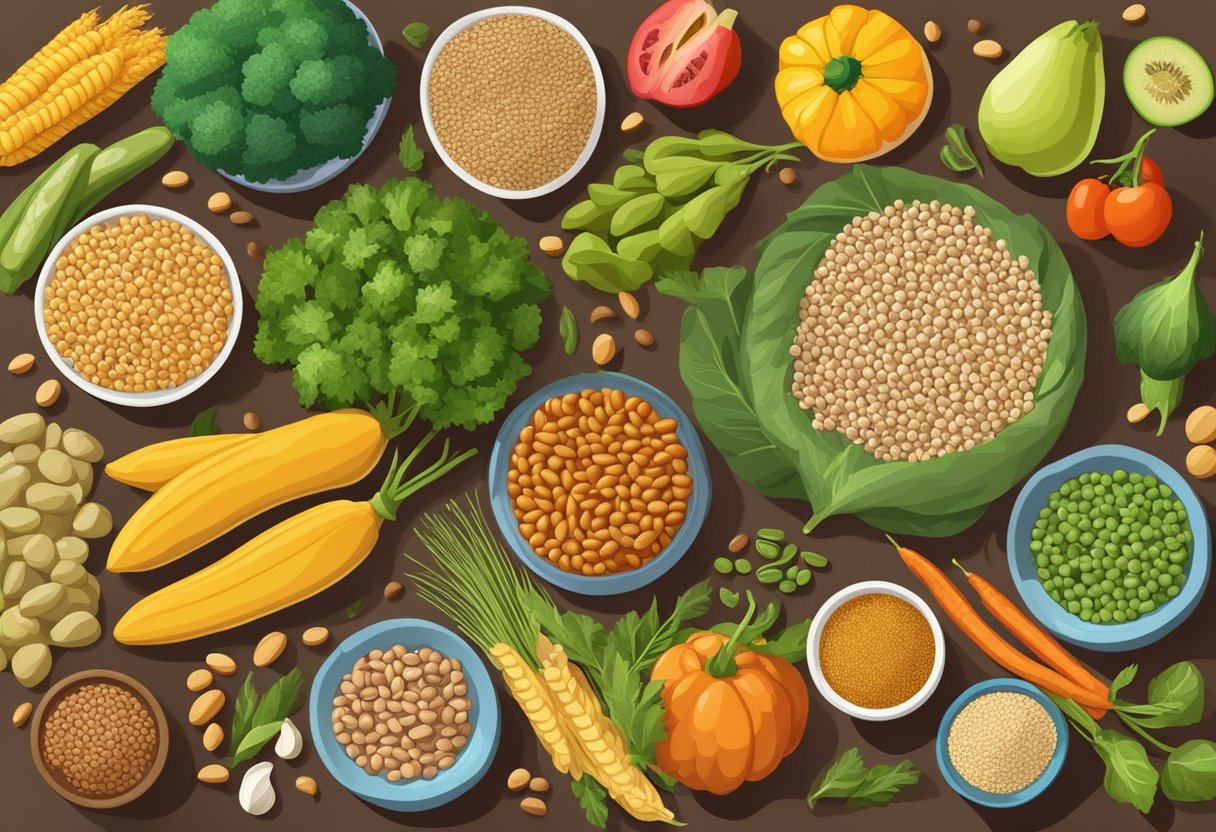
Navigating a gluten-free Mediterranean diet requires a strategic approach guided by professionals. They offer invaluable advice on balancing nutrition while ensuring the diet remains rich in legumes and other key food groups for optimal health.
Roles of Dietitians and Nutritionists
A registered dietitian plays a crucial role in devising a personalized nutrition plan. Given the health benefits associated with a gluten-free Mediterranean diet, such as improved heart health and potential weight management, dietitians ensure clients receive a well-rounded intake of nutrients. They can offer specific tips to increase legume consumption without compromising gluten restrictions. Nutritionists will often recommend incorporating a variety of legumes like lentils, chickpeas, and beans, which are cornerstones in the Mediterranean diet.
Tips for Following a Sustainable Diet
To adhere to a long-term gluten-free Mediterranean diet, professionals suggest the following tips:
- Include legumes in meals several times a week for their high nutrient content and to ensure a variety of proteins.
- Emphasize regular physical activity; exercise is a pillar of the Mediterranean lifestyle.
- Rotate through different legumes to obtain a diversity of nutrients.
- Utilize herbs and spices to enhance flavors without adding gluten or excessive calories.
In summary, with a focus on legumes as part of a balanced diet, consistent exercise, and variety in food choices, one can enjoy the wide-reaching health benefits of a gluten-free Mediterranean diet under the watchful guidance of nutrition professionals.
Frequently Asked Questions
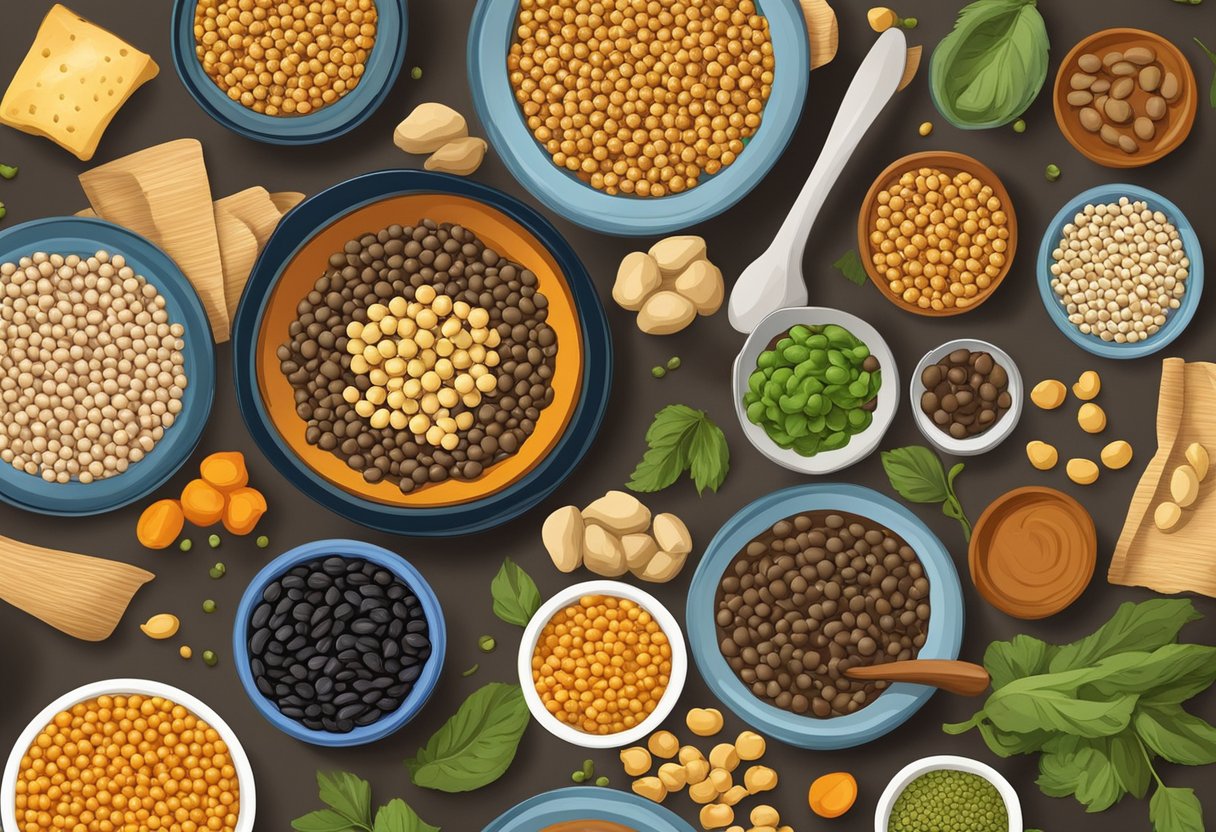
When adopting a gluten-free Mediterranean diet, incorporating legumes is crucial for their nutritional benefits and versatility in recipes.
What legumes are considered safe for a gluten-free Mediterranean diet?
Legumes inherently do not contain gluten, making them safe for a gluten-free Mediterranean diet. Common options include beans, peas, lentils, and chickpeas, which can be enjoyed in a variety of dishes.
Are chickpeas and lentils included in a gluten-free version of the Mediterranean diet?
Yes, chickpeas and lentils are integral to a gluten-free Mediterranean diet. They are often used in salads, stews, and as a protein-rich base for many meals. Lentils and chickpeas provide essential fiber and nutrients beneficial within this dietary framework.
How can legumes be incorporated into gluten-free Mediterranean diet meals?
Legumes can be seamlessly integrated into meals by adding them to soups, salads, and casseroles. They serve as an excellent replacement for gluten-containing grains, enhancing dishes with their texture and nutritional profile.
Which gluten-free legumes provide the best nutritional value for the Mediterranean diet?
Lentils, chickpeas, and black beans are among the most nutritious legumes fitting for a gluten-free Mediterranean diet. They are high in protein, iron, fiber, and complex carbohydrates while being low in fat.
Can I find a Mediterranean diet cookbook that focuses on gluten-free legume recipes?
Specific cookbooks tailored to a gluten-free Mediterranean diet may offer a variety of recipes featuring legumes as the main ingredient. These curated recipe collections emphasize the use of legumes in diverse and flavorful meals.
What should I look for in a gluten-free Mediterranean diet shopping list to ensure it includes appropriate legumes?
When creating a shopping list for a gluten-free Mediterranean diet, prioritize unprocessed, whole legumes like chickpeas, lentils, and various beans. Check for certified gluten-free labels if choosing canned or prepared legume products to avoid cross-contamination.



